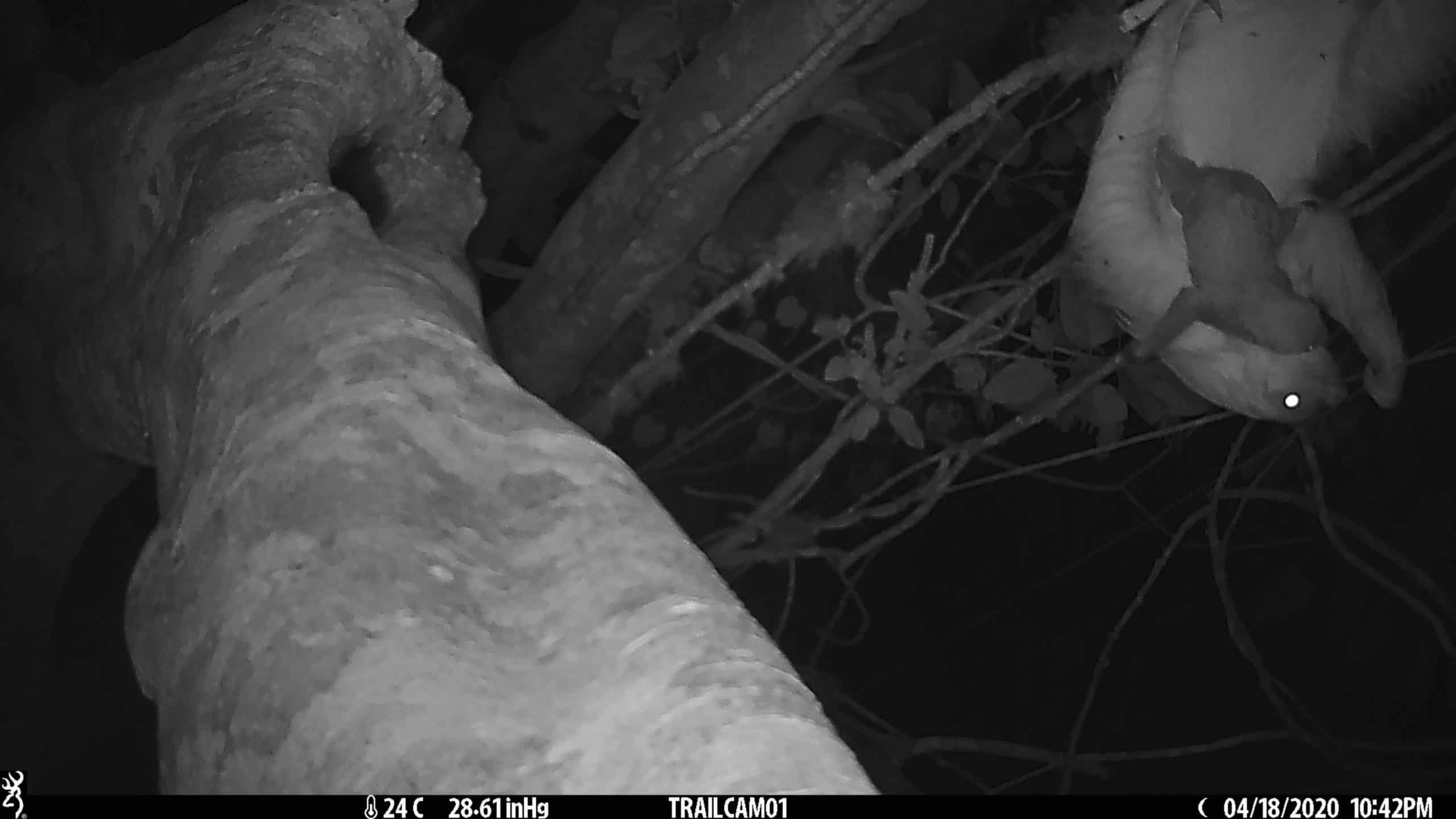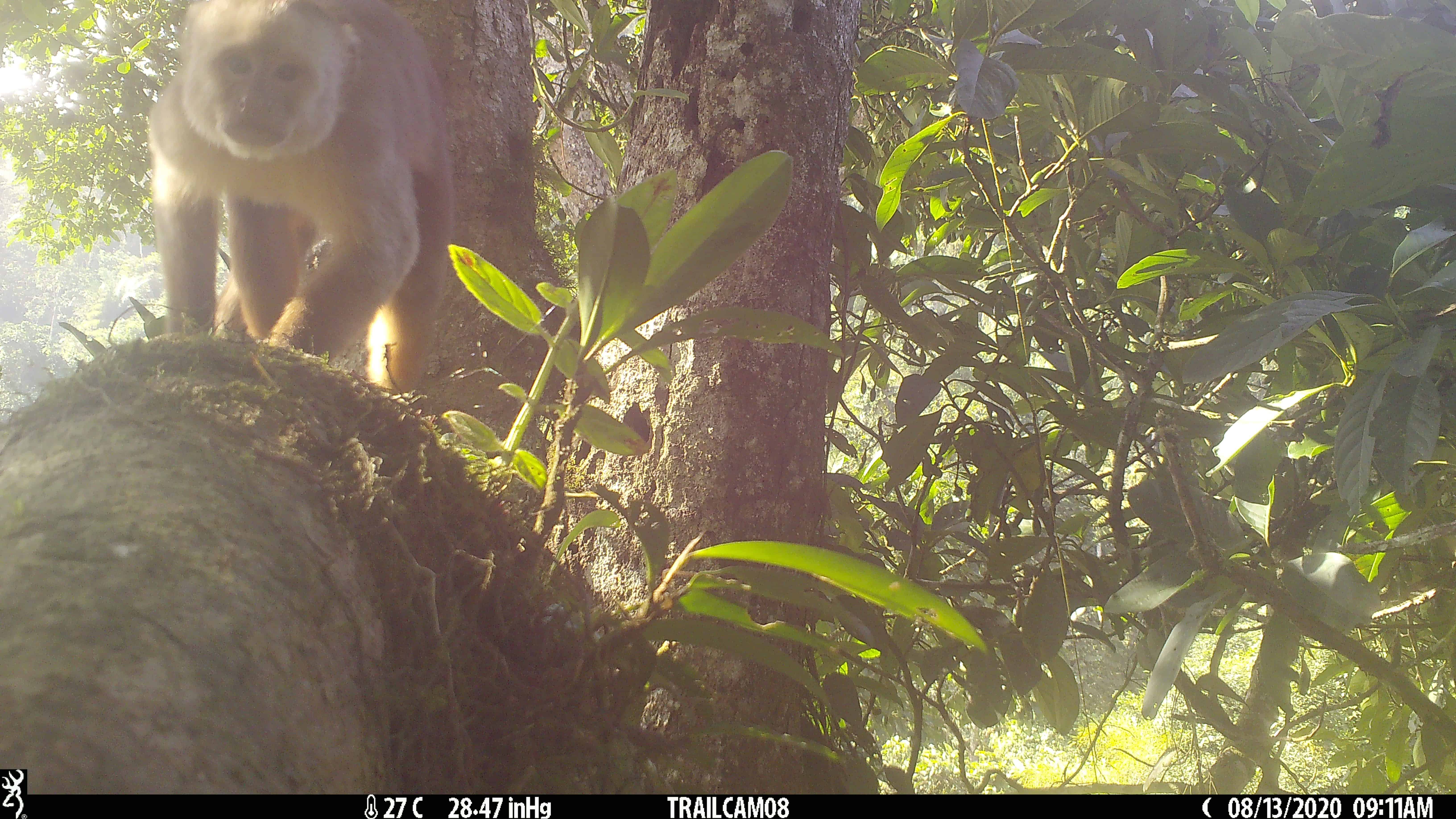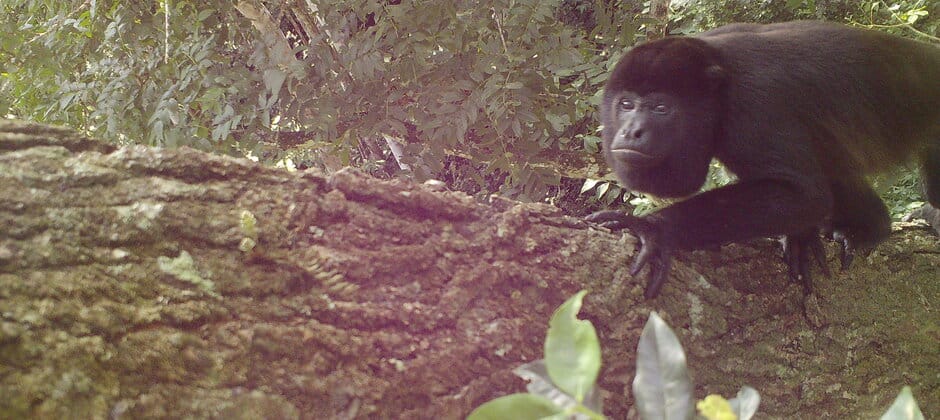Share this article
Wild Cam: Tracking habitat preferences of imperiled Ecuadorian primates
In the coastal rainforest of Ecuador, Jacquelyn Tleimat sometimes felt like her tree climbing skills were being judged.
She and her colleagues hiked for miles, hacking vegetation away with machetes on trails that hadn’t been used in at least five years, while carrying 60 pounds of gear. When they reached a promising tree, the team would shoot a rope over a large branch using a type of slingshot. After testing that the rope would hold their weight, they would begin to climb—sometimes as high as 120 feet up a tree that often swayed with the wind.
“It would get nerve-wracking,” she said.
Occasionally, their weight test on the rope wasn’t good enough—Tleimat said she once fell 20 feet through the air as a flimsy branch gave way. To make matters worse, Ecuadorian mantled howler monkeys (Alouatta palliata aequatorialis) climbing nearby would often stop to take a critical look at their abilities. The monkeys looked at them almost as if they were saying “what’s this really slow monkey doing up here?” Tleimat joked.
The reason Tleimat, a TWS member and PhD student at Texas A&M University-Corpus Christie, was going through this trouble was to learn more about the populations of primates in the Chocó rainforest of Jama-Coaque Reserve, a private protected area in northwestern Ecuador managed by Third Millennium Alliance. The alliance is a nongovernmental organization focused on conserving the rainforest of coastal Ecuador, where 90% of forest has been cleared in the past few decades. A master’s student at Texas State University at the time, Tleimat also wanted to figure out what habitats the monkeys preferred.
Ecuadorian white-fronted capuchins (Cebus aequatorialis) are considered critically endangered by the International Union for Conservation of Nature and Ecuadorian mantled howlers are considered vulnerable. Ecuadorian mantled howler monkeys, like the ones in the video above, are comparatively easier to survey due to their loud characteristic howls. White-fronted capuchins are more cryptic and challenging to study, Tleimat said, since they don’t make as much noise and their sounds can be easily confused as bird songs.
In research presented at The Wildlife Society’s virtual 2021 Annual Conference, Tleimat described how she and her colleagues used trail cameras and sound recorders placed in tree canopies to track these two primate species.
They recorded more than 60 capuchin sightings and 320 howler sightings. In one case, a capuchin came right up to the camera and knocked it off its focus. “Jokes on [that monkey],” Tleimat said. “We still got the picture.”
Enlarge

Credit: Jacquelyn Tleimat/Third Millennium Alliance
Along with footage of Margay cats (Leopardus wiedii) and toucans bathing, the researchers also saw what looked like the same two-toed sloth mother (pictured above) passing by cameras several times over a period of six to eight months with its young. “It was very awesome to see this baby sloth getting bigger and bigger,” Tleimat said.
The research is still ongoing. But so far, the team has found that the howler monkeys tend to spend more time in taller trees close to forest edges, eating the leaves and seed pods of species like ice cream bean trees. More sun exposure in these edge areas allows these trees to grow a little faster. Their leaves are also a little less toxic than other trees.
Enlarge

Credit: Jacquelyn Tleimat/Third Millennium Alliance
The researchers found that recording devices and trail cameras were a successful method for finding capuchins, and may be more time effective than visual surveys. Tleimat and her colleagues are still analyzing the data, but their initial findings suggest that capuchins may prefer deeper forest areas. Some of these areas in the Chocó rainforest, which sits in a wildlife corridor being developed by TMA, are up for sale. She said that conservation organizations such as TMA should focus on buying these properties to improve protection for the critically endangered capuchins.
This photo essay is part of an occasional series from The Wildlife Society featuring photos and video images of wildlife taken with camera traps and other equipment. Check out other entries in the series here. If you’re working on an interesting camera trap research project or one that has a series of good photos you’d like to share, email Josh at jlearn@wildlife.org.
Header Image:
The IUCN lists the Ecuadorian howler monkeys as vulnerable.
Credit: Jacquelyn Tleimat/Third Millennium Alliance








